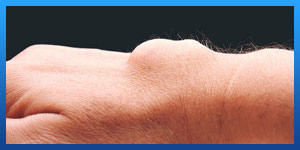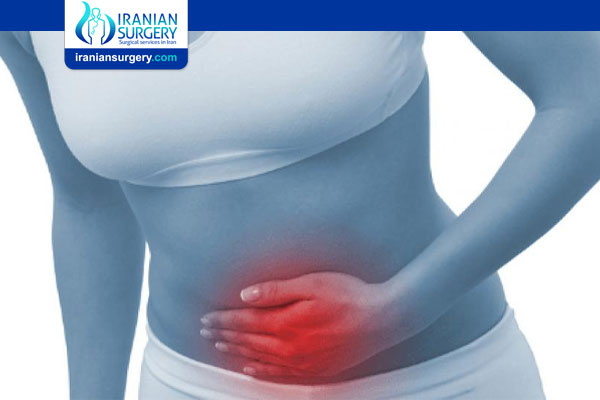Home Remedies for Cysts
What is a cyst?
Cysts are hard lumps filled with various substances that form in the body. There are many different types.
The most common types are epidermoid cysts, which grow right under the skin.
Doctors or surgeons may help you remove these types of cysts. This is the only reliable way to remove one completely.
On the other hand, you can also try home remedies for your epidermoid cyst. These may help shrink it, reduce its appearance, or alleviate discomfort.
Read more about : How to burst a bartholin cyst at home?
A precautionary note
Before discussing home remedies, it’s important to go over a few important details:
. You should never try to remove or pop a cyst at home. This increases chances of infection. Popping also doesn’t guarantee a cyst will go away permanently.
. None of the remedies in this article are known or proven to remove cysts completely. However, science suggests they may help in indirect ways.
. Even if they’re not yet proven to work, trying these remedies poses few risks if used correctly.
Remember: If your cyst isn’t causing you problems, you don’t necessarily always need to remove it.

If it bothers you aesthetically, gets infected, causes pain, or grows rapidly in size, then talk with your doctor.
- Hot compress
Simple heat is the most recommended and effective home measure for draining or shrinking cysts.
Here’s how it works: Heat may reduce the thickness of liquid in the cyst. In the case of liquid-filled epidermoid cysts, this may help fluid drain quicker into the lymphatic system. This system helps maintain fluid balance in the body and plays a role in protection against infection.
Read more about : Ovarian cyst size chart
Keep in mind
Though this remedy is widely recommended by doctors and reputable sources, there are still no studies testing or showing that it’s effective. There’s also no research supporting the science for how it works.
As well, it doesn’t permanently remove cysts — only a professional healthcare provider can do that. Although this method isn’t guaranteed to drain or reduce the appearance of a cyst, it may be worth a try.
To use
- Heat clean water to a warm or hot temperature, not boiling.
- Wait for the water to cool to a tolerable, but hot, temperature for skin contact.
- Dampen a clean cloth with the water and apply to the cyst for 20 to 30 minutes.
- Repeat a few times each day.
- Tea tree oil
Essential oil from the tea tree (Melaleuca alternifolia) may help some cysts, albeit in an indirect way.
Research shows tea tree oil has antimicrobial activity. This means it kills bacteria, viruses, fungi, and other pathogens.
Some cysts are caused by ingrown hairs. These form when hair follicles don’t grow properly, leading to infection of a sebaceous gland. This creates a pus pocket that may become a cyst, referred to as a sebaceous cyst.
As an antimicrobial, tea tree oil may help kill bacterial infections caused by ingrown hairs. It may decrease the chances of getting a cyst caused by an ingrown hair or reduce its appearance.
Keep in mind
Overall, tea tree oil isn’t a proven cyst remedy. There are still no studies to show that it can remove or prevent cysts.
Also, since not all cysts are caused by ingrown hairs, tea tree oil is highly unlikely to help all types of cysts — though trying it is low risk and may help in shrinking the cyst.
To use
- Dilute tea tree essential oil in clean, warm, or hot water. Dilution ratio is two to three drops per 1 ounce of water.
- Apply the mixture directly to the cyst several times per day with a clean cloth.
You can also combine tea tree oil applications with the above hot water compress remedy. Simply add essential oil to the hot water in the proper dilution ratio.
Avoid applying undiluted tea tree essential oil directly to the cyst or skin. This may cause discomfort, irritation, or burns. Always dilute this oil before topical use.
- Apple cider vinegar
Apple cider vinegar is another recommended natural remedy. It may help with cysts to a limited extent.
There are no studies showing apple cider vinegar reduces cysts or removes them.
But, like tea tree oil, apple cider vinegar is shown to be antimicrobial. More specifically, the acetic acids in it are antimicrobial, according to one in vitro study. In vitro simply means that the studies were performed in a test tube rather than in a natural environment.
Keep in mind
Apple cider vinegar may only be effective for certain kinds of cysts, such as those caused by bacteria or infection, but there is no guarantee. It may still be worth a try since there are very few health risks.
To use
- Mix equal parts water with apple cider vinegar.
- Apply this dilution directly to the cyst several times per day.
You can combine apple cider vinegar applications with the hot water compress home remedy. Simply add the apple cider vinegar to the hot water in the proper dilution ratio.
Never apply undiluted apple cider vinegar directly to skin. Acetic acids may cause discomfort, irritation, or burns.
- Aloe vera
Research shows that aloe vera has confirmed anti-inflammatory and antimicrobial properties. Both may help with pain and irritation in cysts.
Aloe vera may also help reduce appearance or get rid of certain cysts caused by bacteria or other pathogens.
Keep in mind
In studies, aloe vera hasn’t been shown to reliably remove, drain, or reduce the appearance of cysts. It could be helpful for discomfort and pain, though more research is needed to fully support this.
To use
Following label directions, apply a pure aloe vera gel, cream, or lotion directly to an irritated or painful cyst as often as needed.
Only source aloe products from reputable and trustworthy companies.
- Castor oil
Oil from the castor plant (Ricinis communis) may help cysts in the same vein as apple cider vinegar or tea tree.
Research shows castor oil is antimicrobial. It’s notably effective at killing bacteria that live in the skin, which can cause acne and cysts.
Keep in mind
Castor oil isn’t a proven cure for cysts, nor is it shown to reduce their appearance. It’s also unlikely to help all types of cysts, only the types caused by bacteria — though there is no guarantee they help with those types either.
To use
Make sure to source a 100 percent pure castor oil product. Only purchase products from trustworthy companies with good reputations.
- Put one drop of castor oil on your finger and apply to the cyst.
- Apply more if needed, as often as needed. A few times each day is recommended.
Avoid ingesting castor oil, which is toxic when consumed internally.
- Witch hazel
Witch hazel is a common topical wash for acne. Research indicates it may help acne due to astringent and anti-inflammatory properties.
These properties could also benefit epidermoid cysts. It’s possible that witch hazel’s astringent tannins may help shrink them, while anti-inflammatory effects could ease pain.
Keep in mind
There are still no direct studies showing that witch hazel can treat cysts. It’s unlikely that it helps to remove them, though it may ease discomfort.
To use
- Dab a cotton ball with witch hazel.
- Apply to the cyst area.
- Repeat a few times per day or as often as you would like.
People with sensitive skin may have reactions to witch hazel, but this can be avoided by diluting witch hazel with water.
- Honey
Some recommend honey for management of cysts, though research on this is scarce. A review of recent studies indicates it has antimicrobial and anti-inflammatory effects, however.
Keep in mind
Regardless of what the current science says, it’s probably not enough to call honey a cyst treatment or remover. Using it may help with discomfort as well as cysts caused by bacteria.
To use
One method is to create a poultice by mixing honey, preferably raw and all-natural, with other antimicrobial herbs and ingredients. You then apply the mixture to the cyst and leave it on overnight.
Alternatively, try this simpler technique:
- Put a dab of pure honey on the cyst site.
- Leave the honey on the cyst for a few hours, as a longer amount of time may help it to be more effective.
- Wash the honey away, and apply more as often as you would like.
The bottom line
Some home remedies can help with certain aspects of cysts, or specific types. Hot water compresses are most recommended by reputable sources.
Before using topical natural remedies, do a skin patch test: Apply a small amount to your forearm, and then wait for 24 hours to see if you have an allergic reaction. Though these are rare, they could happen.
If a home remedy causes discomfort, irritation, or other unusual symptoms, discontinue use immediately. Talk to your doctor instead about cyst treatment. Remember that the only proven way to remove a cyst is to have it done by a healthcare provider.
Source:
. https://www.healthline.com/health/home-remedies-for-cysts#overview


